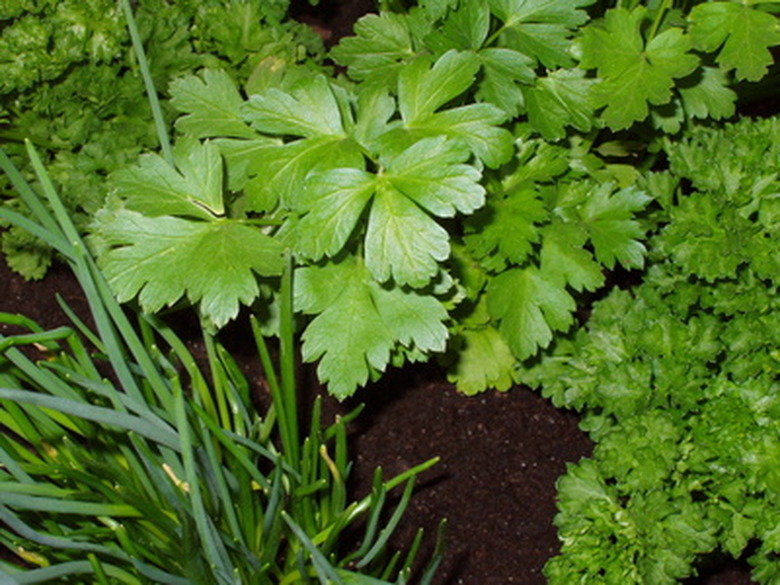How To Identify An Herb Plant
Identifying an herb plant can be a challenge. The best way to do this is by trial and error–and by familiarizing yourself with the various types of herbs. Herb plants can be found in both food and medical applications. There are specific details which help identify certain herbs while others may be confused for non-herb vegetation. Understanding these details will help you identify an herb plant easily.
Step 1
Look at the herb plant. Identify herbs such as basil and lemongrass by the leaf color; basil can range from a glossy green to purple, while lemongrass resembles the top of onions. Observing the leaves will help identify an herb plant such as rosemary (which looks like pine needles bunched together) or parsley (which can have curled or flat leaves). Other herbs have blossoms that accompany the leaves. Examples include: oregano (pink blooms and green leaves), sage (mauve blooms and grayish green leaves), or golden marjoram (pink blossoms and pointed leaves).
- Identifying an herb plant can be a challenge.
- Observing the leaves will help identify an herb plant such as rosemary (which looks like pine needles bunched together) or parsley (which can have curled or flat leaves).
Step 2
Examine the stems of the plant. Herb plants are identified by their non-woody stems. Herbs will not have a bark covering like trees, shrubs or many vines have.
Step 3
Observe the insects in the surrounding area. Some herbs are natural pest control against moths, flies and ants. Examples of these herb plants include mint, spearmint, peppermint or pennyroyal. If you observe a section of the garden or ground that is visibly absent of these insects then you may have one of these herbs growing in the location.
- Examine the stems of the plant.
- Some herbs are natural pest control against moths, flies and ants.
Step 4
Smell the aroma from the herb plant. Many herbs have distinctive smells that are dead giveaways of their identity. Basil has a strong earthy scent; fennel smells similar to licorice; mint has its own unique smell. Herbs such as cilantro and dill are more subtle, but can also be identified this way. Smell labeled herbs to help you associate a certain aroma with specific herbs. Look around fresh food markets and farmers markets for good examples.
Step 5
Taste the herb. Herb plants can also have distinctive flavors. Examples such as basil, thyme, rosemary and dill have strong flavors that easily identify them. Find fresh herbs plants. Break off a small section. Place the piece on your tongue. You will immediately get the flavor of the herb. Make sure the plant is well-washed before trying this step.
- Smell the aroma from the herb plant.
- Smell labeled herbs to help you associate a certain aroma with specific herbs.
Step 6
Find a cookbook that uses herbs as one of the main ingredients. Most cookbooks using these types of recipes will have descriptions or pictures of the herbs being used. This will provide identifying information and ways which specific herb plants can be used. Read as many herb cookbooks and guides as you can. This will help you learn more about each type of herb.
